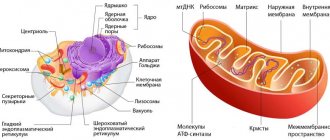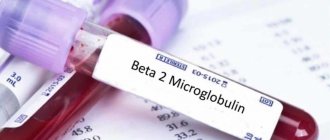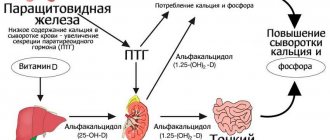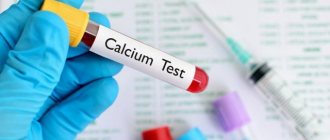1.General information
Probably, any modern person, when asked “Why is calcium needed in the body?” will answer without hesitation: “For the bones.” To a large extent, this is true: almost the entire volume of calcium contained in the body is located in the bone tissues of skeletal structures, and the main processes of its absorption and processing are carried out there. However, it is needed not only “for the bones”.
The role of calcium as a biochemical reagent is much broader and more important: this macroelement (not to be confused with microelements, the required concentration of which is orders of magnitude lower) is involved in the regulation of the processes of excitation-inhibition of the nervous system, desensitization and immune response (it is no coincidence that calcium salts are prescribed for allergic reactions), cellular nutrition, contractile activity of muscle fibers, peristalsis, differentiation of stem cells, secretion of enzymes and hormones, hair and tooth growth.
Nutritional deficiency of calcium, as well as deficiency of other key macro- and microelements (for example, iodine, magnesium, potassium, etc.) at this stage of development of civilization is becoming an increasingly serious problem, since the intake of these substances into the body depends critically on lifestyle and diet, and both are becoming less and less natural for humans. An additional complication is the fact that a deficiency of such elements is most often not the first diagnosis: patients present with symptoms of inflammatory, infectious, metabolic, allergic, gastroenterological and many other disorders - and are treated specifically for them - while the underlying painful condition there lies a deficiency of one or another biologically active substance, which can clearly manifest itself only many years after the first noticeable disturbances appear.
A must read! Help with treatment and hospitalization!
Characteristics
In the human body, a violation of calcium metabolism provokes the development of various diseases. Calcium is considered an important element in the process of regulating the nervous excitability of muscle tissue, the process of hemostasis, in the stabilization of cell tissue membranes, and in the transduction of intracellular signals.
In medicine, there are two forms of disturbance of mineral metabolism in the endocrine system:
- hypocalcemia (hypoparathyroidism);
- hypercalcemia (hyperparathyroidism).
The second type of disease is more dangerous and requires more complex treatment. In most cases, if the pathology is advanced, doctors resort to surgery.
In order to understand what could provoke a change in the production of calcium by the parathyroid glands into the blood, how to deal with this disorder and what the consequences may be, each pathology should be considered separately.
2. Reasons
The definition of “nutritional” (food) implies and reflects the main cause of calcium deficiency: insufficient dietary intake. The largest amount of calcium available for absorption is found in dairy products (especially cottage cheese and butter), seafood, eggs, and vegetables. Since calcium is biochemically related to vitamin D, a lack of the latter most often leads to calcium deficiency; Thus, the reasons should also include insufficient exposure to the open sun.
The most significant risk factors include smoking, situations of chronic stress, long-term use of certain medications (cytostatics, antiparoxysmal drugs, etc.).
Visit our Therapy page
How to Diagnose Hypercalcemia
If excess keratin or liver dysfunction can be determined by the yellowish color of the skin, then excess calcium cannot be diagnosed by eye. You can find out your calcium level through a simple biochemical blood test. If the laboratory notes an excess of the element, an additional examination will be prescribed, which is already aimed at identifying the cause of the metabolic disorder.
Women are advised to have a mammogram to rule out breast cancer. At the same time, it is important to undergo a chest x-ray. In order to find out how much the bones have lost their strength, a magnetic resonance imaging scan is shown. It will show the density of the skeleton and identify particularly depleted areas.
If the patient takes any medications on an ongoing basis, you should definitely inform your doctor about this so that he takes this into account when interpreting diagnostic materials.
3. Symptoms and diagnosis
Classic symptoms of calcium deficiency include asthenia, frequent and painful muscle spasms (cramps), especially in the extremities, bone pain, caries, disorders of the immune and hematopoietic systems (in particular, a tendency to bleed due to insufficient clotting). In more severe and advanced cases, deformation of various structures of the musculoskeletal system, osteoporosis (thinning and fragility of bone tissue) and, as a consequence, frequent fractures are observed; urolithiasis, tooth decay, diseases of the gastrointestinal tract, liver, kidneys; hypothyroidism, tetanic (muscular-spastic) attacks, tremor, multiple sclerosis.
It is obvious that calcium deficiency is very dangerous in childhood, when the skeleton and other key systems of the body are being formed. Often such insufficiency is revealed during examination of patients with rickets; Often, children with calcium deficiency develop abnormalities in the structure of the lens of the eye, serious psychoneurological disorders, convulsive syndromes, flat feet, etc. Reduced blood clotting in childhood makes any scratch dangerous, and in some cases causes fatal bleeding.
Calcium deficiency is preliminarily diagnosed based on the results of examination, history taking and study of the clinical picture. The diagnosis is confirmed by laboratory tests.
About our clinic Chistye Prudy metro station Medintercom page!
A little more about the symptoms
The clinical picture in both cases is pronounced. The main area of damage is the skeletal system, which contains more than 90% of the total calcium content in the body.
Symptoms of hypercalcemia, regarding bone tissue:
- pseudo- and simple form of gout;
- deformation;
- pain;
- muscle weakness and atrophy;
- fractures even with simple bruises;
- cystic bone formations.
In the severe stage, there is a sensation of “pins and needles”, numbness and burning in certain parts of the body, and temporary paralysis of the pelvic muscles may occur.
Hypocalcemia is characterized by seizures that can affect not only the limbs, but also the muscles of the chest. The danger comes from a hypocalcemic crisis, which causes serious complications.
4.Treatment
The most effective and natural way to restore the optimally required calcium concentration is a fortified diet. It should, however, be understood that any diets, like all other treatment regimens, activities, procedures, can be developed and prescribed exclusively by a doctor.
The same applies to special calcium-containing supplements and drugs intended for the treatment of the most severe cases of calcium deficiency: such drugs can only be used as prescribed by a doctor.
Hypocalcemic crisis
An exacerbation of calcium deficiency is characterized by a decrease in plasma minerals to less than 2.25 mmol/l. A hypocalcemic crisis is also dangerous.
The attack can occur suddenly, but, as a rule, it is preceded by a number of symptoms:
- feeling of "goosebumps";
- tingling feeling throughout the body;
- limbs and part of the face go numb;
- severe muscle weakness;
- sudden muscle pain;
- depression;
- change in skin color.
Gradually, loss of sensitivity and other signs are replaced by muscle twitching. Initially, the patient feels only mild and isolated spasms, but quickly enough the condition develops into attacks of severe convulsions.
Muscle tone is expressed by characteristic manifestations:
- “the hand of the obstetrician”;
- "horse foot";
- "fish mouth";
- and others.
The danger arises when spasms affect the muscle tissue of internal organs: renal/liver colic, laryngospasm or bronchospasm. Impaired breathing can cause asphyxia.
At the moment of crisis, the patient feels unbearable pain, from which he loses consciousness and the ability to rationally perceive what is happening.
Pathogenesis
The pathogenesis of hypercalcemia and clinical manifestations is multifaceted. In this connection, we will briefly consider only the pathogenesis of hypercalcemia in primary hyperparathyroidism. It is based on a violation of the mechanism of suppression of parathyroid hormone (PTH) secretion. Excessive production of PTH causes a decrease in the renal threshold for reabsorption (re-absorption) of phosphates and in turn provokes the development of hyperphosphaturia / hypophosphatemia . Hyperphosphaturia and excessive production of PTH stimulate the synthesis of calcitriol 1,25-(0H)2-03 in the renal tubules, which helps to increase the absorption of calcium in the intestine.
Along with this, excess PTH leads to an acceleration of the processes of bone resorption and bone formation, but the process of formation of new bone tissue lags behind the process of its resorption, which ultimately leads to generalized osteoporosis / osteodystrophy and hypercalciuria , which contributes to the development of damage to the epithelium of the renal tubules and the gradual formation there are stones in them. The formation of various organ lesions is based on hypercalcemia , which causes the development of nephrocalcinosis / nephrolithiasis .
In the development of gastrointestinal lesions, in addition to hypercalcemia , accompanied by calcification / atherosclerosis of pepsin and hydrochloric acid is important . Excessive amounts of PTH, along with hypercalcemia, influence the development of pathological conditions of the cardiovascular system: left ventricular hypertrophy , arterial hypertension , myocardial , valvular , coronary calcifications , arrhythmias , increased contractility of the heart muscle. With chronic hypercalcemia, gradual deposition of calcifications can be observed in the muscles, kidneys, on the walls of large arteries, myocardium, and superficial layers of the cornea.
Important and necessary calcium: the normal content of the element in the body
Calcium is a common macronutrient in the human body[1]. The mineral is involved in many processes: from the formation of the skeleton to the transmission of nerve signals. At the same time, according to research, most of the population of our country consumes insufficient amounts of calcium[2]. In the article we will talk about what level of calcium should be normal, what threatens a lack of macronutrients and how to prevent the development of deficiency conditions.
What should your calcium level be?
Calcium is found in all cells of the human body. The main part of the mineral is concentrated in bone tissue: 99% (which is about 1.2–1.4 kg) falls on the structures of bones and teeth and about 1% circulates in the blood [3]. It is impossible to detect calcium deviations from the norm without special laboratory tests. In private diagnostic centers and public health facilities, calcium levels in urine, blood, hair and nails are checked.
To assess calcium metabolism, the level of calcium in the blood is usually determined. Research on other biomaterials is carried out less frequently. The level of total calcium in the blood varies depending on the age of the person (see table).
Table. Total calcium in the blood: reference values[4].
| Age | Calcium norm, mmol/l |
| Up to 10 days | 1,90–2,60 |
| Up to two years | 2,25–2,75 |
| Up to 12 years | 2,20–2,70 |
| Under 18 years old | 2,10–2,55 |
| Up to 60 years old | 2,15–2,50 |
| Up to 90 years old | 2,20–2,55 |
| Over 90 years | 2,05–2,40 |
Why does the body need calcium?
- Calcium is necessary for the formation of bones and tooth enamel and for their further maintenance throughout life[5].
- Maintains heart rhythm[6].
- Promotes normal transmission of nerve impulses.
- Takes part in blood clotting processes.
- Regulates the activity of enzymes and endocrine glands.
- Participates in the processes of muscle contraction and relaxation.
- Reduces vascular permeability.
- Participates in the regulation of the acid-base state of the body [7].
How much calcium do you need per day?
The norm of the mineral depends primarily on the age of the person. According to the methodological recommendations of the Federal Center for Hygiene and Epidemiology of Rospotrebnadzor, the daily calcium requirement for newborns (up to three months) is 400 mg, children from four to six months need 500 mg of the mineral, up to one year - 600 mg, from one to three years - 800 mg, from three to seven years - 900 mg, for children 7-11 years old 1100 mg of calcium is recommended, from 11 to 18 years old 1200 mg of the macroelement is recommended[8].
The calcium intake rate for an adult 18-59 years old is approximately 1000 mg per day, after 60 years - 1200 mg daily [9]. In women during pregnancy and lactation, the need for calcium increases. The mineral is necessary for the intrauterine development of the fetus and for the mineralization of the skeleton and growth of the child during breastfeeding - while a woman experiences a decrease in bone mass, which is restored after stopping breastfeeding[10]. In the second half of pregnancy, the daily requirement for the mineral is 1300 mg, and during breastfeeding (up to a year) - 1400 mg[11].
Important! Research shows that the level of calcium also depends on the level of vitamin D in the body. Calciferol promotes the absorption of calcium in the intestines and maintains the necessary level of the mineral in the blood[12]. Therefore, it is recommended to take calcium together with vitamin D. According to the clinical recommendations of the Ministry of Health of the Russian Federation, the daily requirement of vitamin D for people 18-50 years old is 600-800 IU, for older people - 800-1000 IU. During pregnancy, 800–1200 IU of calciferol daily is indicated[13].
What are the dangers of deviations from the norm?
Deviations in calcium levels from the norm, as a rule, do not make themselves felt immediately. At an early stage, calcium deficiency may be asymptomatic. In addition, the first pronounced signs of this condition cannot be called specific: increased fatigue, muscle weakness, and sleep disturbances. All this looks more like banal fatigue, and therefore almost no one pays attention to such signals, and the disease progresses. Over time, the deficiency negatively affects a person’s appearance: nails become brittle, hair becomes brittle, the skin takes on an unhealthy color and becomes dry, problems with teeth may appear, and posture is disturbed[14,15].
In more advanced cases, numbness of the fingers and convulsive syndrome occur - all this is caused by a disorder in the transmission of nerve impulses and intracellular signaling in muscle tissue [16,17]. A lack of macronutrients can cause a decrease in cognitive abilities [18]. Also, a lack of calcium leads to the destruction of bone tissue: the consequence of a long-term deficiency is almost always a decrease in bone mineral density, which further increases the risk of developing calcium deficiency diseases - osteoporosis, spondylosis, osteochondrosis, osteoarthrosis [19,20].
An excess of calcium is no less harmful than its deficiency. When the level of the mineral increases in the body, memory loss, depression, drowsiness, muscle and joint pain, itching, loss of appetite, and nausea may occur. Hypercalcemia can provoke kidney damage, seizures, arrhythmia, peptic ulcers and cholelithiasis and other disorders[21].
Excess calcium is still less common than deficiency[22]. As mentioned above, there is a widespread lack of calcium intake in our country. An unbalanced diet and insufficient consumption of foods high in macronutrients lead to calcium deficiency.
Important! The most physiological, but at the same time difficult way to maintain normal calcium levels is a balanced diet. The macroelement is found in dairy products, sesame, poppy seeds, soybeans, nuts (walnuts, hazelnuts, almonds), greens and vegetables, and so on [23].
According to the clinical recommendations of the Ministry of Health of the Russian Federation, if there is insufficient consumption of the mineral in food, it is recommended to take special calcium supplements to maintain the daily norm[24]. Let's look at several drugs that are on the market:
- “Calcium-D3 Nycomed Forte”[25] (number in GRLS - P N013355/01)[26]. This is a drug for the treatment and prevention of calcium and vitamin D3 deficiency, as well as osteoporosis and its complications. The active ingredients are calcium carbonate and colecalciferol. The product is available in the form of chewable tablets with lemon flavor. The average retail price of package No. 60 is 576 rubles, No. 120 is 767 rubles[27].
- "Calcium 600"[28]. This is a dietary supplement from Solgar® with calcium and vitamin D3. The additive is used as an additional source of nutrients. The manufacturer notes that the product is primarily recommended for people over 30 years of age. The price of a package (60 pieces) of “Calcium 600” from Solgar® is 904 rubles[29].
- “Calcemin® Advance”[30] (number in GRLS - P N015747/01)[31]. Suitable for the prevention and treatment of deficiency of calcium, vitamin D and some other nutrients, and can be used as part of complex therapy for osteoporosis. In addition to calcium and vitamin D, Calcemin® Advance contains other active ingredients: magnesium, zinc, copper, manganese, boron. The average retail price of Kalcemin® Advance package No. 30 is 522 rubles, No. 60 is 762 rubles and No. 120 is 1060 rubles[32].
Even a slight deviation of the level of calcium in the blood from the norm can negatively affect a person’s health. Therefore, it is important to maintain normal levels of the mineral in the body. With modern pharmaceutical drugs this is quite easy and convenient.
"Complivit® Calcium D3 Forte" is a preparation of calcium and vitamin D3 in the form of chewable tablets
It is used for the prevention and treatment of calcium and vitamin D3 deficiency, as well as in the complex treatment of osteoporosis and its complications.
The product regulates the exchange of calcium and phosphorus in the body (in bones, teeth, nails, hair, muscles). Reduces resorption (absorption) and increases bone density, enhances the absorption of calcium in the intestines and the reabsorption of phosphates in the kidneys, promotes the mineralization of bone and dental tissue. One tablet of Complivit® Calcium D3 Forte contains 500 mg of calcium and 400 IU of vitamin D3.
To compensate for the deficiency of calcium and vitamin D3, adults and children over 12 years old are recommended to take two tablets per day, children 3–12 years old - one tablet per day or as prescribed by a specialist.
The average retail price of Complivit® Calcium D3 Forte No. 30 is 260 rubles, No. 60 is 407 rubles, package No. 100 will cost an average of 537 rubles, package No. 120 - 576 rubles[33].
Complivit® Calcium D3 Forte should not be taken by children under three years of age, people with severe renal failure, high concentrations of calcium and vitamin D in the body, and in some other cases. More information about contraindications can be found in the instructions.
* The registration certificate number of the drug in the GRLS is LSR-008769/09 dated November 2, 2009[34].
** All remedies given in the article have contraindications. Before using them, you should consult a doctor.
*** The material is not a public offer. Information on the cost of calcium supplements is presented for informational purposes only.
All information related to health and medicine is presented for informational purposes only and is not a reason for self-diagnosis or self-medication.
List of sources
- Leonard R. Sanders. Hyperparathyroidism // Secrets of endocrinology / ed. M.T McDermott. - M.-SPb: BINOM Publishing House - Nevsky Dialect, 2001. - P. 129-140.
- Dedov I.I., Melnichenko G.A., Pronin V.S., et al. Clinic and diagnosis of endocrine disorders. - M., 2005. - P. 99–111.
- Volkov M.M., Kayukov I.G., Smirnov A.V. phosphorus-calcium metabolism and its regulation. Nephrology. 2010; 14(1):91-103.
- Cherenko S.M. Primary hyperparathyroidism: basics of pathogenesis, diagnosis and surgical treatment. - K.: Express polygraph, 2011. - 148 p.
- Mirnaya S.S., Pigarova E.A., Belyaeva A.V. et al. The role of the calcium-sensing receptor in maintaining the calcium homeostasis system // Osteoporosis and Osteopathy. 2010. No. 3. pp. 32–36.
Classification
The classification is based on several characteristics.
Based on the content of the Ca+ cation, several degrees of severity of hypercalcemia are distinguished:
- Mild degree - total Ca content less than 3 mmol/l; ionized calcium – up to 1.5 mmol/l.
- Moderate degree - the level of total Ca is increased to 3.5 mmol/l; and the ionized calcium indicator is up to 1.8 mmol/l.
- Severe degree—total Ca level above 3.5 mmol/l; ionized calcium - more than 1.8 mmol/l.
According to the course, acute hypercalcemia (synonymous with hypercalcemic crisis) and chronic are distinguished.
A hyperparathyroid crisis occurs when excess calcium entering the bloodstream exceeds the excretory capacity of the kidneys. The critical calcium concentration is generally individual, but in most people the toxic effect appears already at levels of 3.4-4.1 mmol/l.
Diet
There is no specially designed diet, however, in cases where an excess of calcium is caused by increased absorption of Ca+ in the intestine ( D-hypervitaminosis , Burnett's syndrome ), a diet with a decrease in calcium content in food is recommended (approximately at the level of 800 mg/day). For this purpose, it is recommended to limit the consumption of products such as sesame seeds, hard cheeses, almonds, sardines in oil, garlic, parsley, soybeans, hazelnuts, and also reduce the consumption of milk and dairy products.
Interpretation of results
Normally, the macroelement concentration should be in the range of 2.25 - 2.75 mmol/l.
When interpreting the results, the age of the patient must be taken into account. If the indicators are within normal limits, it is highly likely that there are no calcium metabolism disorders.
An increase in total calcium is most often caused by malignant or benign neoplasms of the parathyroid glands or cancer of another location. Also, an excess of a macronutrient may have other reasons (for example, dehydration, tuberculosis, hyperthyroidism, Addison's disease). Macronutrient deficiency is most often caused by a decrease in the amount of proteins. Only a doctor can correctly interpret the test results. Often, to establish an accurate diagnosis, a complex of laboratory tests and instrumental studies is prescribed.
Preparing for the study
For analysis, blood is taken from a vein. It must be submitted in the morning. You should not have breakfast before the examination. Dinner should be light: no fatty foods and alcohol.
You should also refrain from tea, coffee, juice, and milk for 12 hours. You should not exercise the day before the test. For reliable results, you need to spend 48 hours before the test as calmly as possible.
Tell your doctor if you have a chronic illness or if you are taking any medications. Many medications can affect PTH levels, and the doctor must be aware of the full picture in order to correctly evaluate the results of the study.
Increasing values
- increased production of parathyroid hormones due to its benign growth or malignant tumor;
- bone metastases in kidney, lung, and breast cancer;
- a special type of malignant tumor - carcinoma, which produces parathyroid hormone, while the primary cancer can be in the uterus, ovaries, thyroid gland or kidneys;
- injuries and illnesses in which a person is forced to remain motionless for a long time, causing calcium from the bones to move into the blood - bone fractures, spinal tuberculosis, Paget's disease or damage to bone tissue with improper formation and resorption, congenital hip dislocation;
- increasing vitamin D levels;
- adrenal disease, especially insufficiency;
- hemoblastoses or tumor diseases of the blood and lymph - especially myeloma, accompanied by destruction of bone tissue;
- Williams syndrome or “elf face” is a genetic disorder where several genes are missing;
- kidney failure;
- granulomatous diseases, especially sarcoidosis;
- excessive intake of medications containing calcium;
- milk-base or Burnett syndrome, when there is a lot of calcium in the blood, and the acid-base balance is shifted to the alkaline side;
- overdose of diuretics containing thiazide, or substances that potently remove potassium and sodium.







